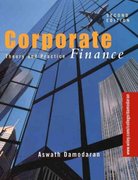Question
A random process {X(t),t T} is said to be a Markov process if P {X(t_n+1) x_n+1|X(t_1) = x1, X(t2) = x2, ..., X(t_n) = x_n}
A random process {X(t),t T} is said to be a Markov process if P {X(t_n+1) x_n+1|X(t_1) = x1, X(t2) = x2, ..., X(t_n) = x_n} = P {X(t_n+1) x_n+1|X(t_n) = x_n} whenever t_1 < t_2 <.... a) Show that this definition is actually equivalent to the following. A random process {X(t),t T} is said to be a Markov process if P {X(t_n+1) x_n+1|X(t1) x1, X(t2) x2, ..., X(t_n) x_n} = P {X(t_n+1) x_n+1|X(t_n) x_n} whenever t_1 < t_2 <....< t_n < t_n+1 b) Use this fact to show that for a Markov process {X(t),t T}, the second-order distribution is sufficient to completely characterize the random process X(t). c) Show that any process with independent increments must be a Markov process.
Step by Step Solution
There are 3 Steps involved in it
Step: 1

Get Instant Access to Expert-Tailored Solutions
See step-by-step solutions with expert insights and AI powered tools for academic success
Step: 2

Step: 3

Ace Your Homework with AI
Get the answers you need in no time with our AI-driven, step-by-step assistance
Get Started


